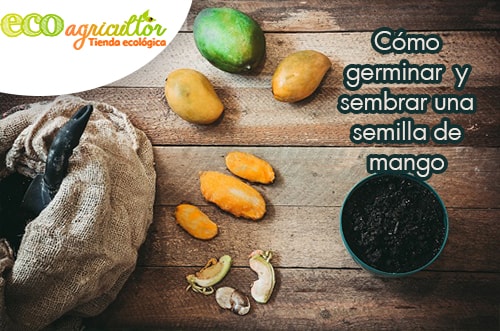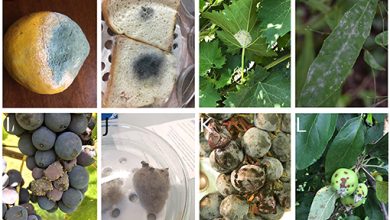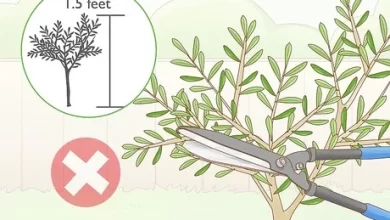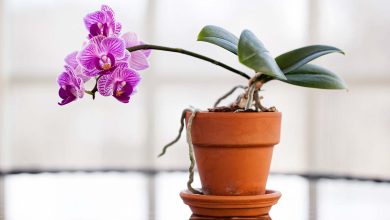How to germinate and sow a mango seed

If you have ever been tempted to grow a mango tree from the seed inside the pit, in this article we will tell you all the details so that you can do it correctly and enjoy your own organic mangoes grown by you.
This tropical fruit, in addition to having an orange pulp with a delicious sweet taste, contains very interesting nutritional qualities, in this article (of which I leave you the link) I talk about the properties of mango and at the end of this post I invite you to see a video in which I summarize the benefits of mango.
We also recommend which organic seeds to use , the best planters, boxes and growing tables for your urban garden and essential books to master everything about organic gardening .
What is mango?
The mango is the fruit of the Mangifera indica L. tree whose origin is in Asia, in particular it is believed to be native to India. It was the Spanish who introduced it to America and today Mexico, Brazil and Cuba are among the main producers of this tropical fruit.
This fruit has an oval shape and its skin or peel can be from green through violet to red and yellow. The pulp is orange, sweet, very fleshy and juicy. The mango seed is also oval and is covered by an endocarp (it is a kind of capsule that separates the fruit from the seed and protects it) of a woody type.
[ Access the Lunar Calendar ]
Mango tree belongs to the botanical family Anacardiaceae , like cashews or cashews and pistachios .
Get the mango seed
Keep in mind that the viability of mango seeds is short, once the fruits are harvested, the seed has to be sown as soon as possible because as time passes, the probability of germination decreases considerably.
Get your mango seed from a ripe fruit grown without pesticides, an organic or organic mango. Clean the bone well of pulp remains and let it dry for a couple of days after which the seed is removed from the inside, very carefully, with the help of a razor, a knife or pruning shears. If you use scissors you just have to cut the edges carefully and if you do it with the knife or razor you insert it into the joint, at the junction of the two halves of the capsule or pod.
[ Lee_ What to grow on a Grow Table in the Urban Garden ]
In a maximum period of 3 weeks, you will have already seen your mango seed germinate.
How to grow a mango
Sowing
Once we have removed the seed from the mango pit and removed the thin brown skin that covers some parts, we can do two things:
- Put it in a container with water for two to four days to promote germination . When you see the first sprout appear, you remove it from the water, wrap it in wet kitchen paper and leave it like that (in a humid environment) while the sprout grows and the seed takes on a slightly green color. That is the moment when we transfer the mango seed to the substrate. But we do not do it in any way, below I explain how you have to do it correctly.
- Sow it directly in the ground or in a pot . But not in any way. You will see that the seed has a shape similar to a bean, bean or bean. It is important that you place the seed horizontally, located in the shape of a C downwards, that is, the concave part is buried in the ground and the convex part upwards. Bury the seed almost completely, let the spine protrude a little and do not press the soil too much. The pot or container you use should have about 4 liters of capacity. It is important that you water the substrate the night before sowing. And when we have sown the mango seed, we water carefully again.
The mango seed can take (if it has the ideal conditions) between 15 and 20 days to germinate.

Substratum
It should always have a certain point of humidity. During the first year of life of the tree you can have it perfectly in a pot. Later you can pass it directly to the soil and keep in mind that it will need a substrate with good drainage, deep, light, porous and with a pH between 5.5 and 5.7. It is very important that the soil drains the water well.
Fertilizers should not be abused because an excess can negatively affect flowering and fruit ripening.
If you place a layer of mulch or mulch on the substrate you will be regulating the appearance of spontaneous grasses and we will improve the quality of the soil and the retention of water and humidity and reduce the difference between the minimum and maximum temperatures.
[ Read_ How to Fix Nutrient Deficiency in Plants ]
During flowering an extra supply of nitrogen can be made. The vermicompost , the compost and compost tea are excellent options for increasing soil fertility.
Light
It is advisable not to expose the mango tree to full sun until it is one year old. It must also be protected from winds.
Locate your tree in a semi-shady place and, once the first year has passed, you can leave it in full sun.
However, it is important to observe the possible effects of the lack or excess of light .
Temperature and climate
The mango tree can have a certain resistance to cold, enduring minimum temperatures of 5ºC and maximum temperatures of 35. Even a tree already with some maturity and in good condition can perfectly withstand temperatures of 0ºC from time to time.
For mango cultivation, climates that intersperse wet and dry seasons are ideal: during the wet season, vegetative growth occurs and during the dry season, flowering and fruit formation occurs.
The hot and humid areas that combine seasons with dry and humid climates are the most favorable for this crop, with relatively mild but rainy winters and summers that are not excessively hot.
Irrigation
During the first two or three weeks of the tree’s life is when we must add more water. And then this amount is reduced.
Make sure the waterings are periodic. In areas with dry climates or seasons with low humidity, irrigation should be increased, while in climates with wet seasons we should reduce them. In any case, and although the mango is a tree that likes humid climates, it can tolerate water stress well and irrigation must be well regulated because excess humidity can be negative for the correct development of the fruits, among other things, due to the appearance of diseases caused by fungi.
During the flowering and fruiting process, it should be watered less and it may even benefit to stop watering during the ripening of the fruit.
[ Read more about Irrigation ]
The most common ways to add water to the substrate is through flood irrigation and through drip irrigation . Obviously, the most sustainable form of water management is drip irrigation.
Plagues and diseases
Cochineal, moth, aphids and fruit flies can occur and diseases such as anthracnose (a fungus that produces dark spots on flowers, leaves and fruits), powdery mildew (a fungus that produces a whitish powder that covers the flowers and leaves) and black stain (another fungus that produces round black spots on the underside of the leaf).
Read more useful information about Pests and Diseases and their Ecological Control .
Harvest
Now we have to use patience. It can take a few years for our mango tree to give us some delicious and meaty mangoes. Specifically, if it is grafted it can take about 3 years, while if we do not graft it it can take between 5 and 10 years to bear fruit.
In the meantime, we will continue to offer you some tasty organic mangoes , so that you don’t end up wanting to eat this exotic fruit.
And you can also sow other horticultural and aromatic plant seeds in your garden to create more diversity.


![Photo of Types of Bonsai: [According to Size and Shape]](https://www.complete-gardening.com/wp-content/uploads/2022/08/types-of-bonsai-according-to-size-and-shape-390x220.jpg)

